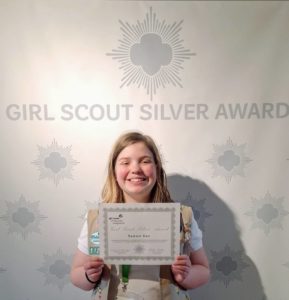Baking is a tasty and fun hobby. Most people probably would not equate it with science, but the truth is, it can be used as a tool to teach certain concepts. Here are a few ways to teach science through baking to children of all ages.
Younger Children

Quick Breads
Younger children are fascinated by cakes and muffins. These are what are referred to as quick breads. The raising (leavening) agent will often be baking soda.
The mild acids in a second ingredient, milk, are enough to trigger a reaction and make the dough rise. This is an example of the reaction of an acid to an alkaline substance.
Baking powder will also make quick breads rise. It is baking soda with some added ingredients, cream of tartar and cornstarch.
The baking soda is a base and the cream of tartar is an acid, so it can be used in a range of recipes where acid might not otherwise be present. Baking powder makes cakes rise through the release of carbon dioxide gas.
Learning about Ph
The Ph (Potential Hydrogen) scale goes from 1 to 14, with 7 being neutral, 1 to 6 acidic, and 8 to 14 alkaline. Ph can be measured using litmus paper, so kids can test small amounts of common items in the kitchen to see which are which.
Measuring
All science is about precision. In baking in particular, children need to learn to measure things accurately in order for the recipe to come out well. They will learn basic measurements like cup, teaspoon and tablespoon.
Older Children

Yeast-raised breads are a challenge for all cooks, and a fascinating science experiment too. You can start with a simple experiment, blowing up a balloon using yeast, to illustrate how yeast makes bread dough or pizza dough rise.
Blowing Up a Balloon with Yeast
You will need:
- A packet of active yeast
- A small, clean, clear, plastic soda bottle (16 oz.)
- 1 teaspoon sugar
- Some warm water
- A small balloon that will fit over the mouth of the bottle
Fill the bottle up with about one inch of warm water. Add the yeast and swirl the mixture around. Add the sugar next. The warmth activates the living organism, the yeast, and the sugar feeds it.
Now the yeast’s digestive system will start producing gas, which makes the dough rise. Place the balloon over the neck of the bottle and put the bottle in a warm place. Within about 15 to 20 minutes, the balloon should start to inflate.
Pizza Dough

Once children have seen the way yeast works, they can learn to make their own pizza dough. The main considerations are that the water can’t be too hot, and the dough needs to rise in a warm place.
Experimental Minicakes
This will involve some waste, but is valuable lesson in how certain ingredients affect recipes, and how important it is to follow baking instructions carefully.
You will need:
- 4 small greased ramekins for baking
For each cake:
- 6 tablespoons flour
- 3 tablespoons sugar
- 1 pinch of salt
- 2 or 3 pinches of baking powder
- 2 tablespoons milk
- 2 tablespoons cooking oil
- 1/4 teaspoon vanilla
- 1/3 of an egg (Break egg into a cup; beat until mixed, then use approximately one third of it. Save the rest for 2 of the other cakes)
Students will make four different batches of batter, with a difference. Make cake #1 exactly as instructed. Label it 1. Make #2 exactly the same, except leave out the oil. Label it 2. Make #3 exactly the same, except this time, leave the egg out. Label it 3. Make #4 exactly the same, except leave the baking powder out. Label it 4.
Place the ramekins on a baking sheet, keeping track of which is which, and bake them in a 350 F oven for 15 to 20 minutes. Remove from the oven and cool briefly. Using a spoon, check the texture and taste of each cake.
They can all be eaten, but eggs help hold recipes together and make them rise. Oil keeps cakes moist. Baking powder makes cakes rise.
Try these ideas, which are sure to provide hours of educational entertainment for your kids.
Other posts you might enjoy:

What Visiters Had To Say